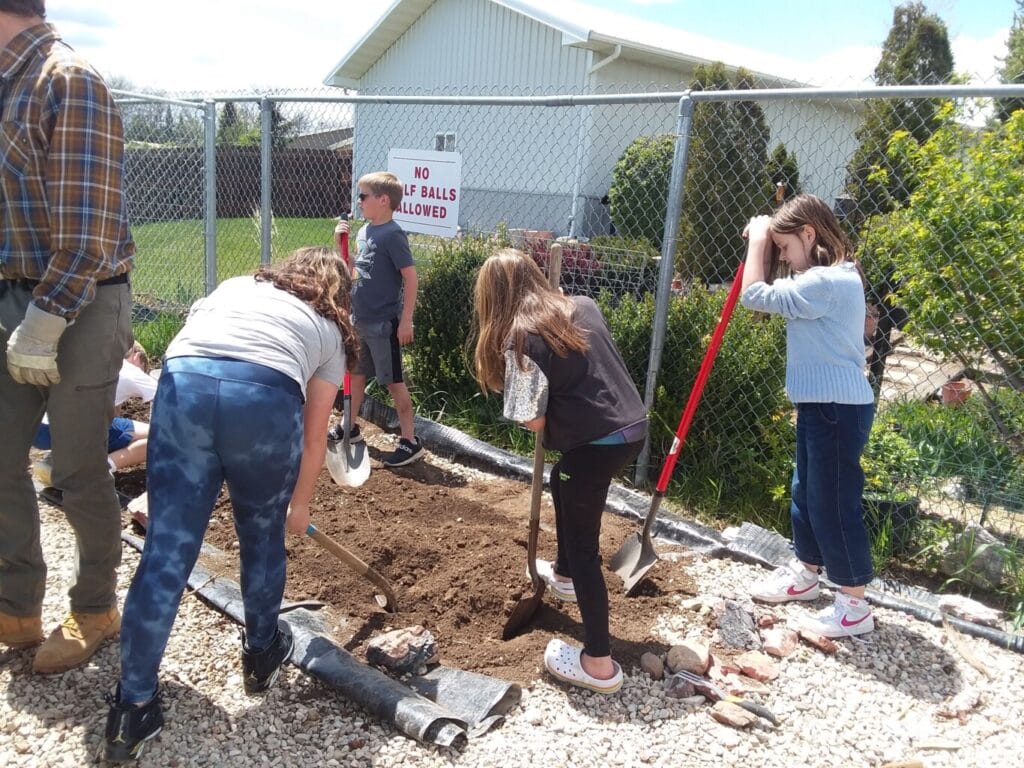The weather was cool and breezy in Sheridan the last week of May this year – perfect weather to do some gardening. WWF Education Director, Andrea Barbknecht was in town to do the official ground-breaking for native plant plots at three Sheridan Elementary schools.
Throughout the past year, WWF and the schools have been working to launch this pilot project, planting native grasses and flowers on school grounds so that students had a laboratory right in their backyard to observe and investigate local species. With the hassle of bussing and the ever-increasing price of gas, bringing kids to wild and intact habitats can be a bridge too far, even in our state with its unparalleled resources. Instead, WWF hatched a plan to bring the wild to the kids.
This spring it was all about tilling the soil, opening up the ground, and getting it ready for seeds. Each school will help out through the summer by pulling, tilling, or killing weeds that come up so that we can exhaust the weed seed bank and give the native seeds a better chance in the fall. Fourth graders at Meadowlark Elementary enthusiastically put their backs into the project, helping rake back rocks, loosen the soil, and work in organic matter. The upside for Woodland Park Elementary is a new use for their huge open space, letting us put in the biggest of our installations. At Coffeen Elementary, the beauty is in their vision, with an inspiring design, a motivated group of garden enthusiasts, and local businesses donating materials. Each school helped create a plot that worked for their space and their needs.

In the fall, the plots will get their final planting, a meadow mixture of native grasses and flowers. Next spring and summer, there will be beautiful blooms and full growth where now there is bare soil. This project isn’t just a pretty facelift, though. WWF has been working with the schools to create lesson plans that teachers can use to get their kids outside to observe, identify, question, and investigate. The lesson plans are tied to grade level education standards so they don’t take away from important classroom work, they add to the different ways that the kids interact with science, reading, writing, math, and their Wyoming home. These lessons and other resources can be found on the Class Outside Classroom Resources Page.
This project has benefitted from many helping hands. Sprouts Greenhouse in Lander grew seedlings so that the plots each had an area where kids could identify individual plants. The BLM will donate sagebrush seedlings from their restoration efforts to help add even more authenticity to our plots. Rooted in Wyoming has helped one of the schools, Coffeen Elementary, plan almost an acre of food gardens, outdoor classroom space, and native plantings. Pacific Power, Wyoming Wildlife Foundation, and the Scott Foundation all provided funds to make the plots and lesson plans possible.
For the wildlife of Wyoming, habitat and the goodwill and education of the next generation will determine their fate. WWF is working to close the circle and make sure that our future citizens, leaders, and conservationists get a great start understanding the complex and amazing plants that are the backbone of healthy Wyoming ecosystems.
